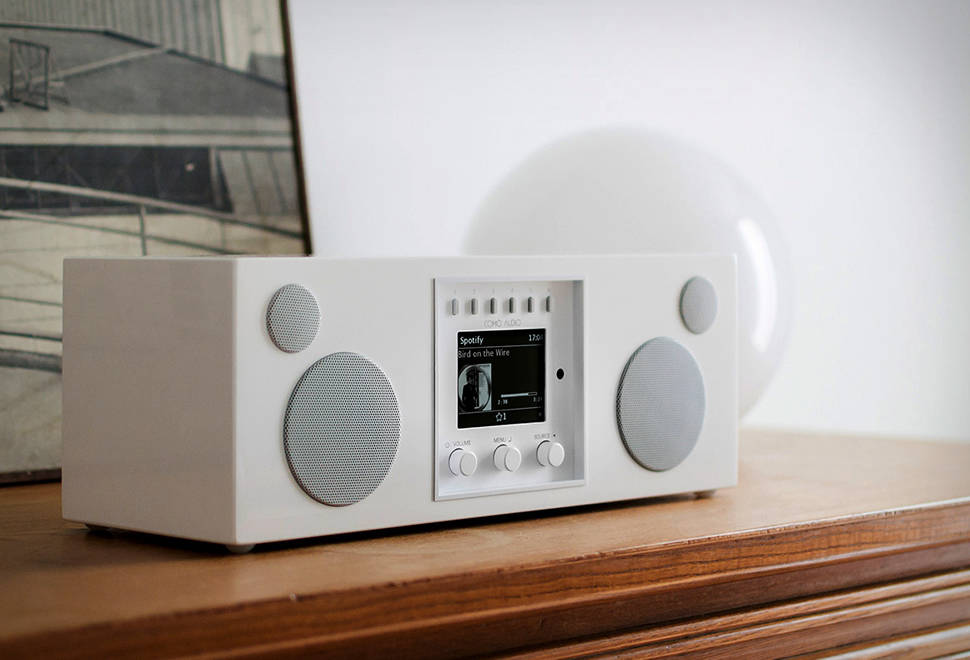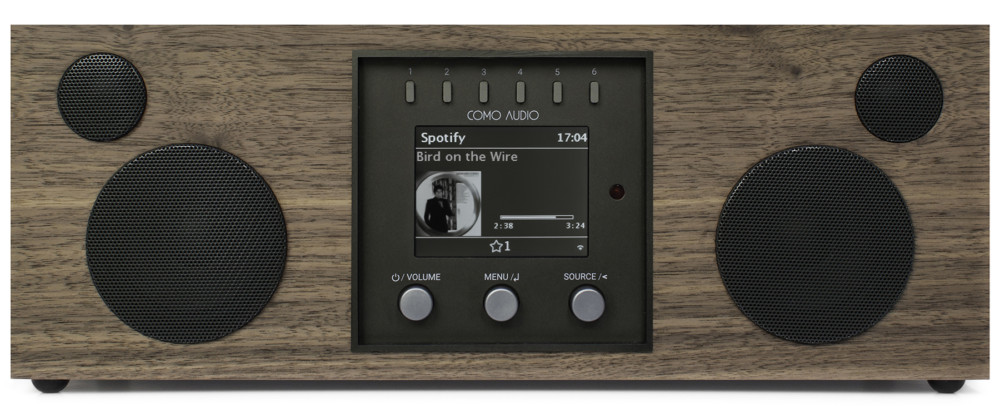One should not visit many shops to find a wide selection of radios. Many of them with names that no one has heard of. But most people have gotten Tivoli, and most people probably have at least one Tivoli radio, because the Italian-sounding radio manufacturer has sold a record number of radios up here.
It has paved the way for many more or less successful competitors, who wrap the same technique in colorful radios, and stick their own name on the front.
The simplest recipe is not always the best, at least not for Tom DeVesto, who together with Henry Kloss, created the modern radio success Tivoli Audio.
After selling out of the company, he began to get bored. The man who had previously sold speakers, played in bands and worn as many years as the best-selling rockers in the Rolling Stones, needed something to do.
He could fly to China and put his name on white, black and red radios, and sell them here. In an almost insatiable market, he would have had as many opportunities as other unknown manufacturers. But Tom DeVesto chose the hard way.
He started again. He chose the name from the third largest lake in Italy, and called the radios Como Audio. The first products, Solo and Duetto, are so reminiscent of his previous success that they are in danger of appearing as copies. They are not.
Streaming and multi-room
The radios are not only that, they are also a Bluetooth power speaker, with both Spotify Connect and Google Cast built-in – and can be connected to your Wifi network at home, or to other audio sources. With cord.
For example, you can plug in the audio from the TV via an optical input on the back, and control the Como radio with the included remote control. Or the Como Control app available for Android and iOS phones.
The first two radios, or as you see call them, the smart speakers, are almost identical except for the number of speakers. The smaller Solo has two speaker elements that deliver mono sound, while the larger Duetto has two per channel for stereo sound.
Otherwise, they are technically almost identical, with stereo receiver for FM and DAB +, and mostly the same connections. Both can be delivered in walnut or hickory veneer at an additional cost, or glossy black or matte white.
They can also be used in several rooms. Or zones as they call it. The number of zones depends a bit on the network capacity, but each zone can have up to five devices.
If you want a multi-room solution, you can control more from the app on the phone, and play what you want where you want. Or the same on all the speakers. By the way, the smaller Solo radio can be expanded to stereo with a separate speaker called Ambiente. It is of course available in the same designs as Solo.
Color screen
Here we have tested the stereo model Duetto, which is as easy to use as most radios we have tested. You can store radio stations regardless of source – FM, DAB + or Internet radio – and select the favorites from the app, the remote control or the six small buttons on the front.
The only thing that can seem complicated is to connect it to the Wifi network, it requires a lot of keystrokes, but Como Audio is not alone.
The color screen on the front should be pressure sensitive, but is otherwise nice to have, since it shows a lot of information about what you are listening to. It can also display album art, photos and video, where supported.
Great sound
Inside the 37 cm wide Como radio, sorry, the system, sits a 30 w amplifier that drives four speaker elements. A 76 mm midrange bass, and a 19 mm treble per channel. There is no subwoofer here, but a bass reflex port on the back lifts the bass level a little extra. Otherwise you can dig into the overly complicated menus – and again, Como Audio is not alone in that, and quiet bass and treble to taste.
Not that I think everyone will find it necessary, for not surprisingly, it sounds very good.
In fact, the Duetto model is one of the better we have tested among stereo radios. It does not sound as powerful in the bass as the larger and more expensive Revo SuperSystem, but it sounds clearer, tougher and more refined than Tivoli Audio’s somewhat smaller Music System Three.
Find a radio station that does not compress the signal too much (64 kbit is a lot, 160 kbit is a little), or stream music via Bluetooth from your phone. Or for the very best sound, plug the laptop or other digital audio source into the optical input on the back.
The alternative is to stream with a GoogleCast Audio to the USB input on the back.
Then you hear why Tom DeVesto succeeded with Tivoli. But here the sound is cleaner, better balanced and not least the treble is an important contribution to the sound image appearing fresher. More open and clearer, simply.
With a good bass foundation, it keeps the commitment up, and the very well-defined midrange, gives not only clearer speech, but also great vocal sound. On the whole, it is very good for a table radio.
Conclusion
It is both a good music system, an excellent radio, and a snazzy piece of furniture. The price is admittedly high, but can be defended by the fact that you can hardly get such a complete plant in such a small package, in the same price range. Como Audio can certainly prove to have the right to life, in the radio jungle out there.

We think
Compact and practical alternative to a stereo system. Very good sound quality, and well equipped. Smart multi-room solution and versatile radio and streaming functions. Some challenges, and convoluted menus. Does not play as loud as a stereo pair with speakers and a small amplifier.
549 €
Specifications
- FM / DAB + radio
- Bluetooth streaming
- Internet radio
- DLNA
- Spotify Connect
- Google Cast
- Multi-room support
- Line and USB input
- Optical input
- Color screen
- Remote control


